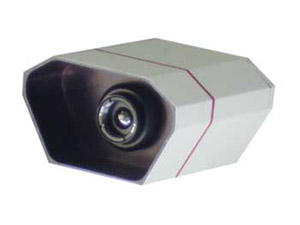
IC Realtime Introduces Cost Effective Thermal Imaging Surveillance Camera
Video surveillance products brand IC Realtime has developed a cost-effective thermal imaging surveillance camera for the residential and light commercial markets. Called  The SEEKER, the camera captures people, objects and activity in total darkness with complete accuracy and is impervious to adverse weather conditions. The SEEKER retails in the $3,000 price range and is shipping now.
The SEEKER, the camera captures people, objects and activity in total darkness with complete accuracy and is impervious to adverse weather conditions. The SEEKER retails in the $3,000 price range and is shipping now.
“Thermal cameras provide the highest level of detail and capture distance because they focus solely on heat imprints (that don’t dissipate over distance),” said IC Realtime CEO Matt Sailor. “If the object is living -- or very hot like a car, boat or plane -- the thermal camera can see its imprint. This significantly reduces false alarms common to standard cameras brought on by trees, reflection, water and many others factors that create a false motion alert. For these reasons, nearly every install can greatly benefit from the thermal camera.”
IC Realtime is well-versed in high-end thermal surveillance gear, having supplied the military and other government agencies for many years. According to Sailor, the goal behind The SEEKER was to make this technology available to the custom residential and light-to-medium commercial markets at a more cost-effective price. The company leveraged its acumen in this arena along with recent lower costs of thermal components.
 “Previously this type of technology would have cost three to four times more,” said Sailor.
“Previously this type of technology would have cost three to four times more,” said Sailor.
“Our ability to deliver a thermal camera to the masses for about the same price as a high-end PTZ (pan/tilt/zoon) camera is a huge deal,” added Sailor. “This is a great leap forward with respect to the type of precision monitoring that installers can now bring to their clients.”
The infrared thermal detectors utilized in The SEEKER are composed of Vanadium Oxide (VOx). The de facto standard for ‘uncooled’ thermal imaging detectors, VOx produces results 3 times better than detectors composed of Amorphous Silicon (a-Si) or Barium Strontium Titanate (BST), when used with a lens of the same relative aperture.